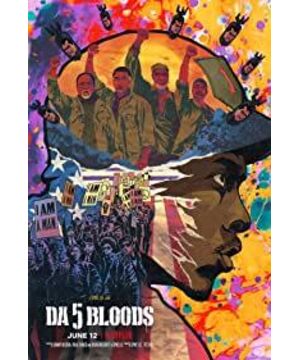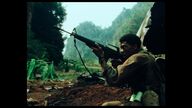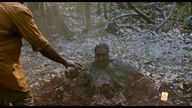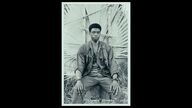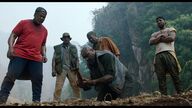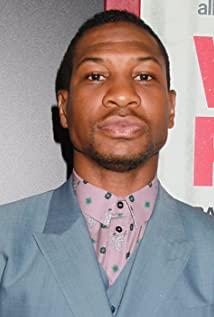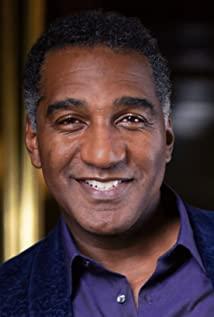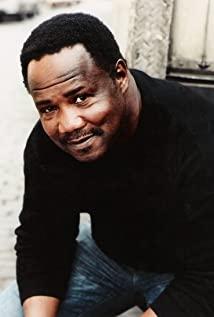This article first appeared in the adventure movie
When Spike Lee set up the background board of the film on the land of Vietnam, and settled on the story of five African-American soldiers in the Vietnam War, it should not be difficult for viewers familiar with Lee to guess that it was only a "starting from a lost gold mine". The typified story of exploration and contention certainly cannot satisfy his creative intentions.
So we not only saw Lee weave and intersperse the Vietnam War memories of the'Bloodfight Five' in different media forms (different aspect ratios, digital/film) during the progression of the story, but also saw the film and "Black "Party Disciple" is exactly the same "preface and epilogue" (the first and last frame)-Lee opened the film with a documentary historical video material group to pick up a montage about the Vietnam War, and at the end of the film, Jin's speech fragment ended.
Lee tried to position the images of these five African-American soldiers, using documentary historical images, the political views of different characters, and the background of the story (the Vietnam War scene in memory and the current Vietnamese environment) as the context. During the journey of the adventure story, Lee actually wanted to pull the audience’s emotions into the inner world of these blacks and the changes that Vietnam has suffered from the war from the past to the present, so as to achieve the thematic reflection on the Vietnam War and the implications involved. Racial questioning-"Why fight for a country when they lynch you?" (Why fight for a country that will lynch you)
When the four brothers of the blood-sworn group reunited, with the rhythm of the black music in the club, the camera slowly pushed and pulled following the dance of the four;
Moreover, after the four of them sat down, they began to ridicule Trump from Paul (Delroy Lindo)’s personal political views (escape from military service)—the former reminded me of the unique features of the black body and the black body under Lee’s lens. The performance of the charm of black culture (in "As It Should Be" is the solo dance of Tina (Rosie Perez) and the close-up of her body when she and Mookie (Lee himself) are in love; in "Black Party" is A group dance with black music in the bar); the latter is not only Lee’s personal political views, continuing the same satirical stance on Trump as in "Black Party", but also can be placed in the film as a follow-up to Paul and the other three brothers If you disagree and go your separate ways, you can watch it-it can be said that at the beginning of the film, Lee provided the audience with an entrance that fits his personal style and is just right.
But when the film followed Lee with a soundtrack that can be described as recorded in film history-Ride of the Valkyries in "Apocalypse Now"-played this pedestrian's jungle adventure (according to Lee Responded in the interview, although this passage may make the audience feel a little humorous because of some inconsistencies with the picture, but he is only paying tribute to his old friend Coppola and his classic "Apocalypse Now"), and then expand In the main storyline, the problems of the film have gradually been exposed to the field of vision.
——The dramatic setting blurs the role's identity counterpoint, and reflections on war cannot be connected with racial issues
With the advancement of the expedition and the recovery of the gold mine, the black group of the five-member group gradually had differences in the meantime. In addition to recovering the buried gold mine and Norman's body, Paul also brought something different from the other three. Another purpose is to step back into this land again-to reach a spiritual reconciliation with the captain Norman who was mistakenly killed by him, and to get rid of the shadow that has been looming over him for a long time.
However, Lee may have suspended this secret of Paul until the end of the film for theatrical considerations before revealing it to the audience. So from the perspective of the audience, it is easy to attribute Paul’s bizarre character and radical words and deeds to his treatment of Kim. Mine’s obsession; or his evasive and self-blaming attitude towards the accidental killing of Norman, blurred his identity as an African-American soldier and the inner trauma and huge shadow caused by the Vietnam War. In my opinion, the suspension of such an important cause is not only unnecessary, but also interferes with the theme of the film.
Apart from this, there is no doubt that the other three brothers (Otis, Eddie, and Melvin) in the "Blood-sworn Five" (Otis, Eddie, and Melvin) treat war, skin color, and their brotherhood attitudes that suit Paul. The opposite is true. They inherited Norman. The concept of —— that is, they believe in the love and peace advocated by Martin Luther King, and they always adhere to the internal unity (as can be seen in many punch gestures with special meaning between Otis and Melvin). Of course, Paul also regards Norman as his own belief and because of the "secret" between him and Norman, the spiritual connection between Paul and Norman is accompanied by a little guilt, which makes it appear more than the others. close. But like this line in the movie:
Yes, he (Norman) is our Malcolm and Martin Luther King
Audiences who know about the black movement or have watched "As It Should Be" all know that even within the black race (corresponding to the group that can be understood as the "Blood Five" in this film) are actually different. From the faction of "Do as it should be" with Malcolm and Martin Luther King as the end of the film, Malcolm's philosophy:
Because this is the situation, you and I have to preserve the right to do what is necessary to bring an end to that situation, and it doesn't mean that I advocate violence, but at the same time I am not against using violence in self-defense.I don't even call it violence when it's self-defense.I don't even call it violence when it's self-defense,I call it intelligence
Unlike Martin Luther King Jr. who completely rejects violence and believes that violence will eventually lead to self-destruction, Malcolm recognizes to a certain extent that violence can maintain their rights for blacks. When we tried to substitute Paul and the other four brothers in the five-member group into two factions with different philosophies within a black community, as the main line progressed, we discovered that in addition to the identity of the'veteran American soldier', the movie can still It is clear that Paul rejects the French Desroche (Jean Reno); rejects the Viet Cong elements; rejects Mexican immigrants, and even continues to call himself and the brother of the quartet "nigger"
So we can’t match the image of the black man with radicalism and racism in "Black Party" against him. From the hat he wears marked with "Make America Great Again", at best, we can only understand him as An activist who agrees with'American supremacy'.
Just as Lee talked about the significance of Paul's role in an interview, his original words were:
So I thought that would be dramatic, and maybe add some tension.
...
It just opened up a lot of possibilities. That's why I did it.
(I think that would be full of drama, and may add some tension...it will bring a lot of possibilities. So with this role)
Indeed, judging from Lee's pen and ink on this character and his exquisite acting skills with Delroy Lindo, this character does have a complete arc and adds a lot of dramatic tension to the plot of the film. But obviously, in addition to the main action story of the film, there is also a framework for'rethinking the Vietnam War' and Lee personally wants to complete the discussion on the topic of race in war within this framework.
However, the convergence of these two themes was in the process of blurring the role identities in the entire plot setting, and ultimately failed to complete smoothly through the character arc and plot development. This'important task' can only be achieved through a few sporadic details. Demonstration-the documentary material of the assassination of Martin Luther King, the dialogue between Norman and the four brothers, and the broadcast of Hannah in Hanoi mentioned the situation of blacks in the United States and the proportion of blacks and whites in the Vietnam War True proportions'.
Obviously, with these alone, it is difficult for the audience to clearly see through the main story about'exploration, treasure hunting, and snatching', and at the same time use the emotions and identities of these black brothers as the cut-in to reflect on the war and related racial issues. Connected.
Therefore, even if Lee mentioned in the interview that he put a lot of historical material and topics about the Vietnam War and race in the film, including the Marvin Gaye soundtrack used in the film’s opening documentary video montage, it is also about race and equality. I hope to use the film as an opportunity to let the public, especially some new generations who have not experienced this history, pay attention to these contents, but in my opinion, it is a pity that the presentation of the final film and the theme framework have not been unified.
Finally, on the film form level:
Lee still uses his personal technique in many places in the film-a confession of Paul'Breaking the Fourth Wall'; a double sliding zoom lens where Otis and his daughter are smiling after meeting each other; for documentary image material Reference
In addition to his personal logo, he also made a basic elemental lens design based on the plot-that is, in the five-person group's reality and flashback, two different media and different picture widths were selected. High ratio. But if we want to look at the "Blood-sworn Five" and "Black Gangster" that helped Lee achieve a new breakthrough at the Oscars last year (in terms of form, the two films are framed at the beginning and the end and the documentary image materials used These places have something in common), I have to say that "Black Gangster" is technically compatible with the film history classics "Gone with the Wind" (with an overhead shot as the opening of the film) and "The Birth of a Country" (with the 3K Klan Rally and History). The parallel montage of the black speech (criticizing Griffith) produced the interaction actually serving the political satire that Lee wanted to accomplish in the content of the film and the correction of the racism that is happening in the United States in reality.
From this perspective, let’s look back at a piece of video material that recorded American reality at the end of "Black Gangster". Lee succeeded in guiding the audience from a crime/comedy story on the main line to reality, effectively explaining to the audience that racism is How it happened and his personal views on how to modify racism: people must unite to fight the evolution of racism, and the pioneering techniques and thematic reflections have formed a unity.
When the same formal framework was put into the "Blood-sworn Five" again, it could only capture some'anti-war' shadows from the images of Ali and Martin Luther King and some documentary materials. When it comes to the complementarity with the main storyline and the traction on racial issues, it seems weak and much inferior.
[Note: Spike Lee on Da 5 Bloods and American lies interview quoted from Sight & Sound " Why fight for a country when they lynch you?" Spike Lee on Da 5 Bloods and American lies - https://www .bfi.org.uk/news-opinion/sight-sound-magazine/interviews/spike-lee-da-5-bloods-black-american-soldiers-vietnam-war】
View more about Da 5 Bloods reviews


